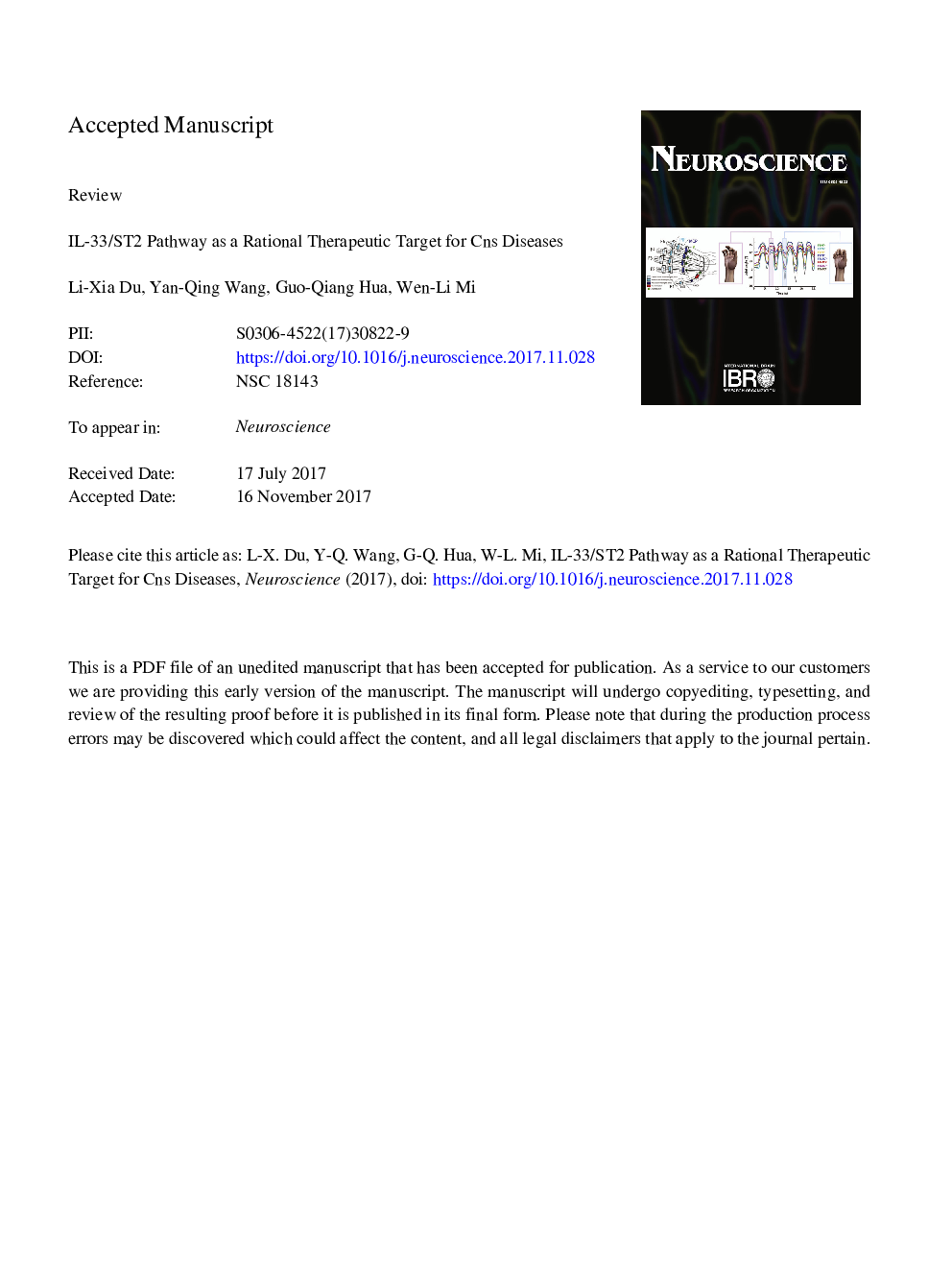| Article ID | Journal | Published Year | Pages | File Type |
|---|---|---|---|---|
| 8841157 | Neuroscience | 2018 | 31 Pages |
Abstract
Interleukin (IL)-33 is a member of the interleukin-1 cytokine family that is produced by many different types of tissues including the central nervous system (CNS). IL-33 mediates its effects via its heterodimeric receptor complex, comprised of ST2 and the IL-1 receptor accessory protein (IL-1RAcp). As a pleiotropic nuclear cytokine, IL-33 is a crucial factor in the development of cardiovascular diseases, allergic diseases, infectious diseases, and autoimmune diseases. Recently, accumulated evidence shows that the IL-33/ST2 axis plays a crucial and diverse role in the pathogenesis of CNS diseases, including neurodegenerative diseases, cerebrovascular diseases, infectious diseases, traumatic CNS injury, chronic pain, etc. In this review, we discuss the recent findings in the cellular signaling of IL-33 and advancement of the role of IL-33 in several CNS diseases, as well as its therapeutic potential for the treatment of those diseases.
Keywords
EAEIL-33SAHSNIECMCCIST2IL-1RAcPSNPsNBDchronic constriction injurySpared nerve injuryexperimental autoimmune encephalomyelitisamyotrophic lateral sclerosisInterleukin-33Alzheimer’s diseaseALScentral nervous system diseasesintracerebral hemorrhageSubarachnoid hemorrhageCNScentral nervous systemSignalingexperimental cerebral malariaICHMultiple sclerosisIL-1 receptor accessory proteinSingle-nucleotide polymorphisms
Related Topics
Life Sciences
Neuroscience
Neuroscience (General)
Authors
Li-Xia Du, Yan-Qing Wang, Guo-Qiang Hua, Wen-Li Mi,
